Lamu County is a water-stressed county. The county is one of the Arid and Semi-arid land (ASAL) and mainly depends on groundwater and rainwater harvesting structures (like djabias) for water supply. Kizingitini village is in Lamu East Subcounty with the residents mostly dependent on djabias for water supply.
However, due to inadequate rainfall in most years, the djabia water is not enough to cater for the daily water consumption of the residents. For instance, this area usually gets very little, short rains (sometimes no short rains at all), leading to long drought periods, thereby increasing the water shortages. The Short Rain Assessment (SRA) done by National Drought Management Authority (NDMA) categorised the area water situation as “alarming”.
To respond to this alarming situation, the National Government of Kenya had initially installed a 2m3/hr reverse osmosis (R.O.) plant in 2015 that was powered by a diesel generator, which proved expensive to maintain and with less production. Most often the plant has a breakdown and takes long time to maintain. Unfortunately, for the residents of Kizingitini village, this project was not enough to quench the thirst of about 700 households in the area.
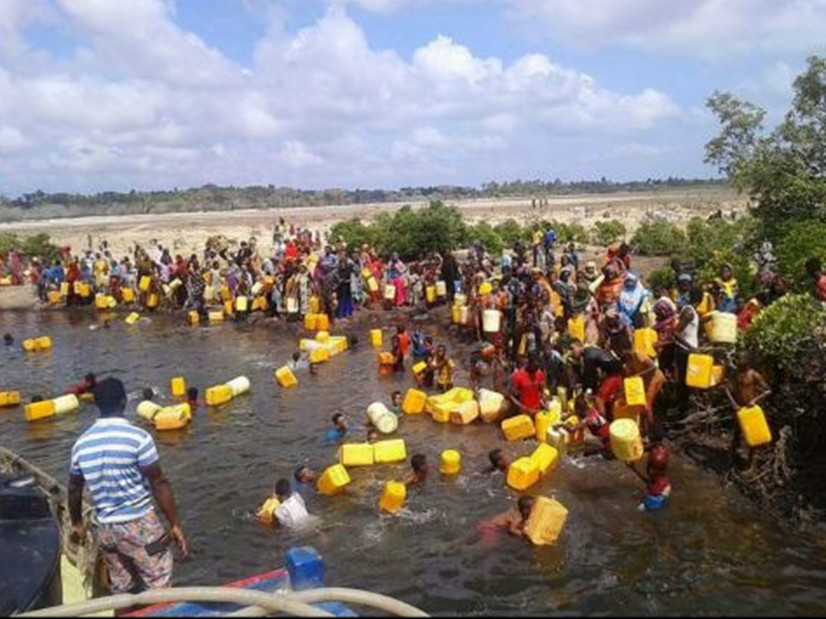
A photo taken in March 2017 showing Pate Island residents scrambling for fresh water
For instance, during 2017 drought all djabias dried and the residents only depended on boat water trucking from Amu Island as the R.O. also became non-operational. It was very cumbersome period for the resident as people scrambled for water, here the law of the jungle of “survival for the fittest” take effects as shown in this photo taken in 2017 drought period.
Similarly, there are private water vendors who also do water trucking from Amu Island but sale the water at exorbitant prices that is not possible for the local mwananchi. For example, a 20 litre jerry can of water was sold as high as Ksh 150 during the hype of 2017 drought. Those were painful moment for people of Kizingitini village.
It is because of these challenges that WaterFund through support of DANIDA implemented Kizingitini Water and Sanitation Extension Project from 2019 to 2021 at Kizingitini village. Fast forward in 2021 the story has now changed; a lot of investment was done and the residents are now in relax mode though they are in a dry season similar to the one in 2017. The project has increased water production from 2m3 to 7m3 per hour and has heavily invested in green energy of 200 panels of 315W each and 48 No. 2170AH maintenance free batteries for power storage as well as 42 No. 125W solar panels for solar pumps.
There is constant energy supply and thus water is now flowing. The project also has a water storage capacity of 50m3 elevated water tank on a 15m high tower to make it possible for every household in Kizingitini to be connected with water by gravity. A total of pipe network of 21.21km was done to ensure the residents get water in their houses dubbed “mai mekoni” a Swahili phrase meaning “water at the kitchen”.
According to the former Chairman for the Kizingitini Water Committee, Mr. Yusuf Omar, “This project is quite a relief to the community and we are currently enjoying pure water from the plant and with proper operation and management of the station, it has the potential of supplying water to the neighbouring villages. Currently the neighbouring villages are supplied with water using water bowser from the station”.
“I no longer have to stress over getting water, moving from one djabia to the other in search of water. I am very grateful for this project. One of the biggest water project in Kizingitini,” says Miss. Nuzzla.
To increase sanitation access, 2 no. 4-door Ventilated Improved Pit (VIP) latrines with handwashing facility and hygiene promotion messages were constructed at both Kizingitini Girls’ Primary School and Kizingitini Boys’ Primary School. Here, a total of 16 doors of toilets were added to these learning institutions, thereby improving the sanitation situation of the schools and ensuring the school conforms to the Ministry of Education's child per door ratio.
Additionally, 1 No. 2 door VIP latrine with handwashing facility and branded with hygiene promotion messages was constructed at Kizingitini Dispensary, which is situated next to the Kizingitini Water Station. The water is appreciated in the whole island and will ensure the communities drink clean, safe water throughout the year.
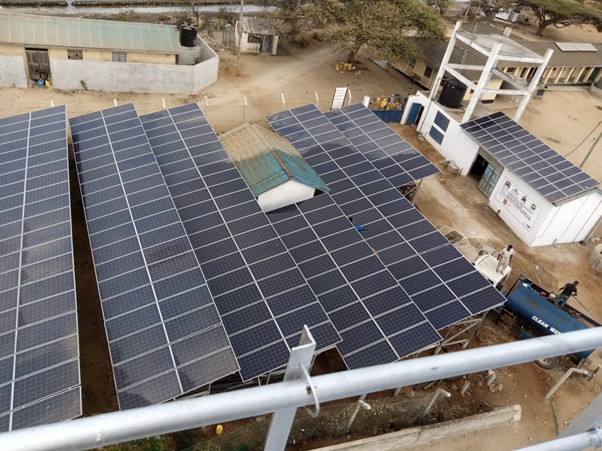
Photo showing 200 no. 315 Watts panels installed at Kizingitini water station
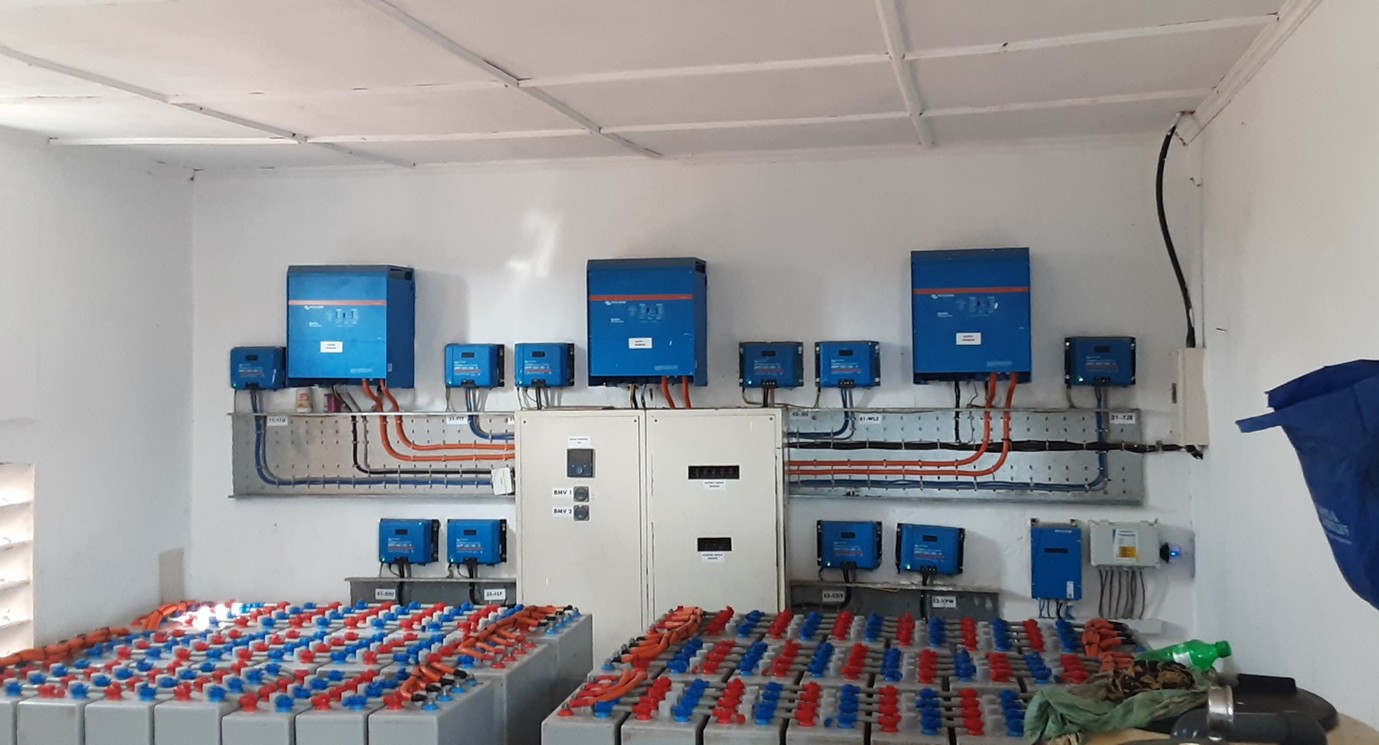 Photo showing the assembled 48 no. free maintenance batteries and the control unit
Photo showing the assembled 48 no. free maintenance batteries and the control unit
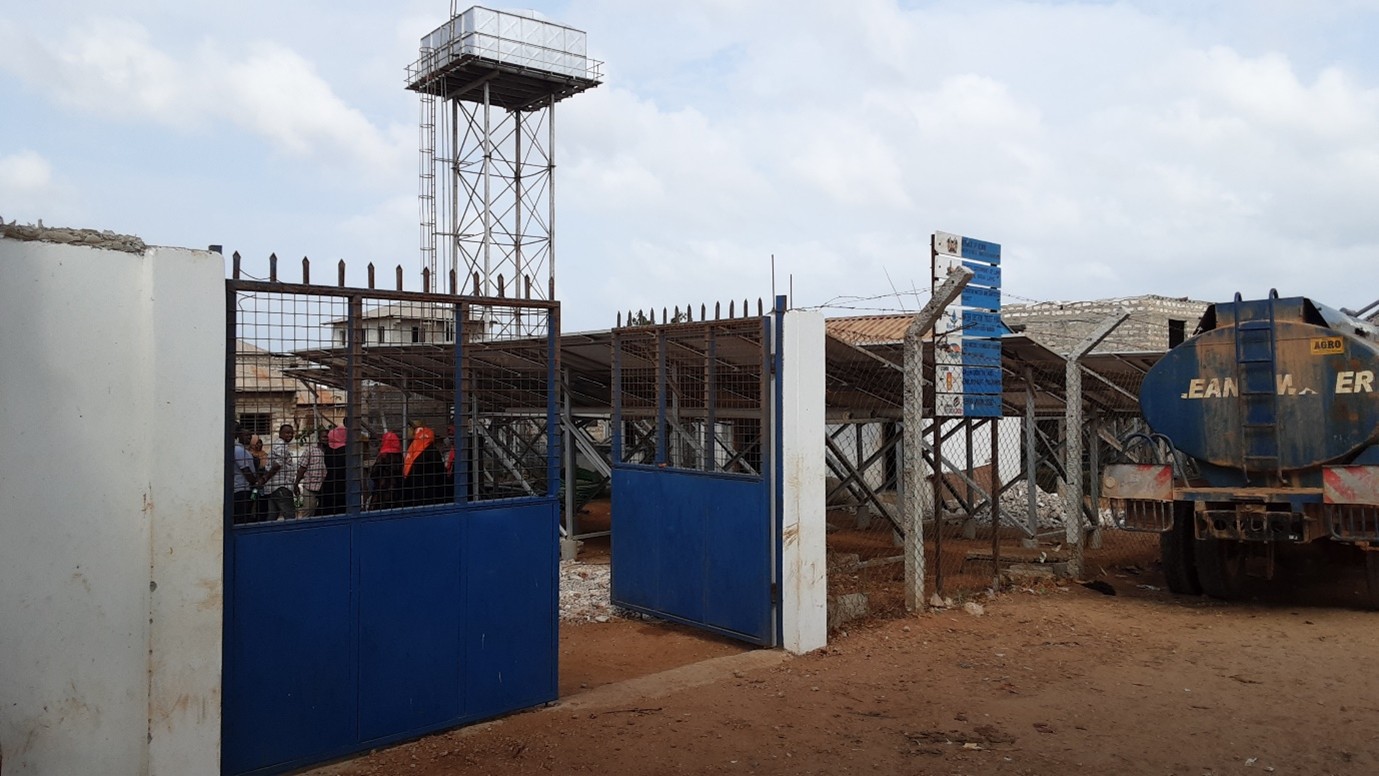 Photo showing 15m high 50m3 steel elevated tank
Photo showing 15m high 50m3 steel elevated tank
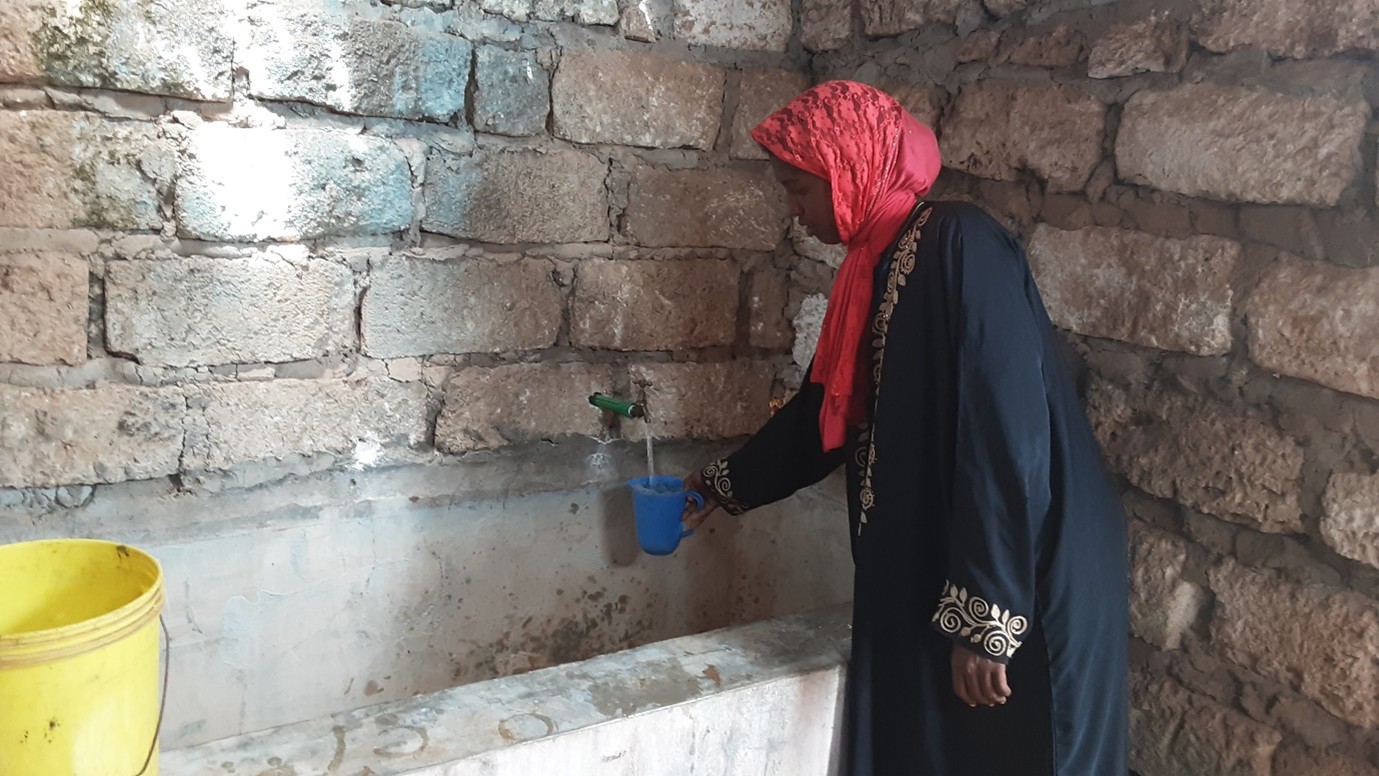 Photo showing beneficiaries fetching water from their household at the tap
Photo showing beneficiaries fetching water from their household at the tap
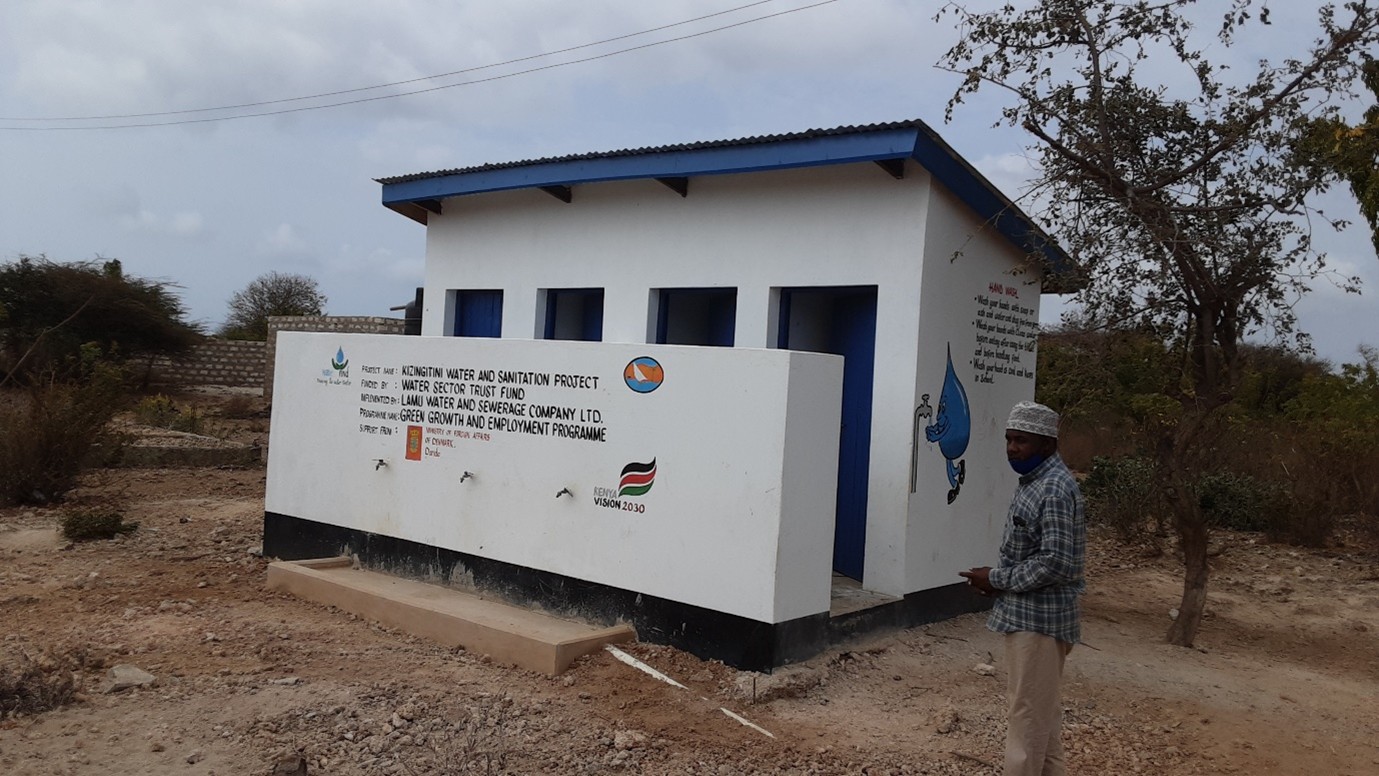 Photo showing 4-door VIP toilet at Kizingitini Boys Primary School
Photo showing 4-door VIP toilet at Kizingitini Boys Primary School
